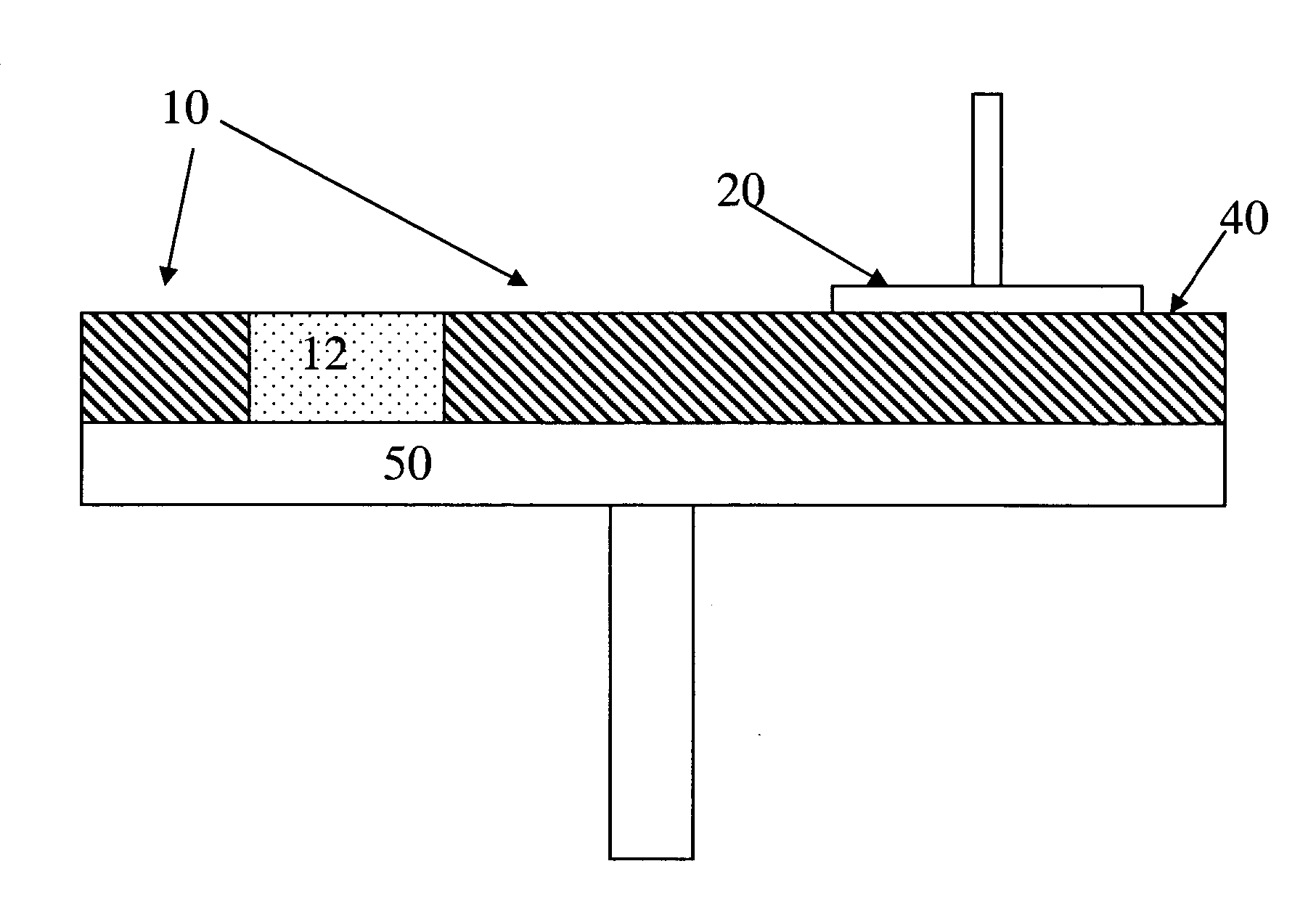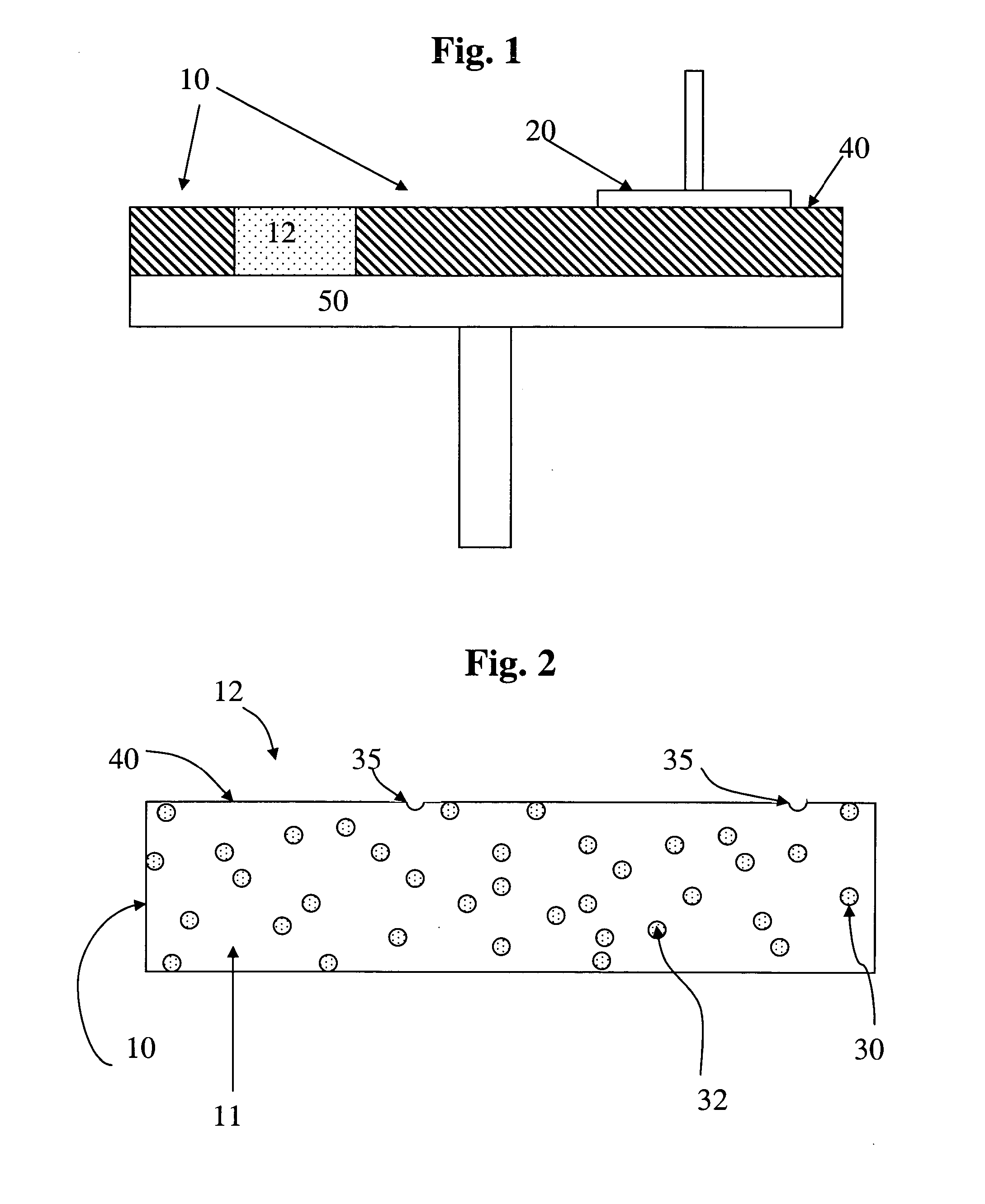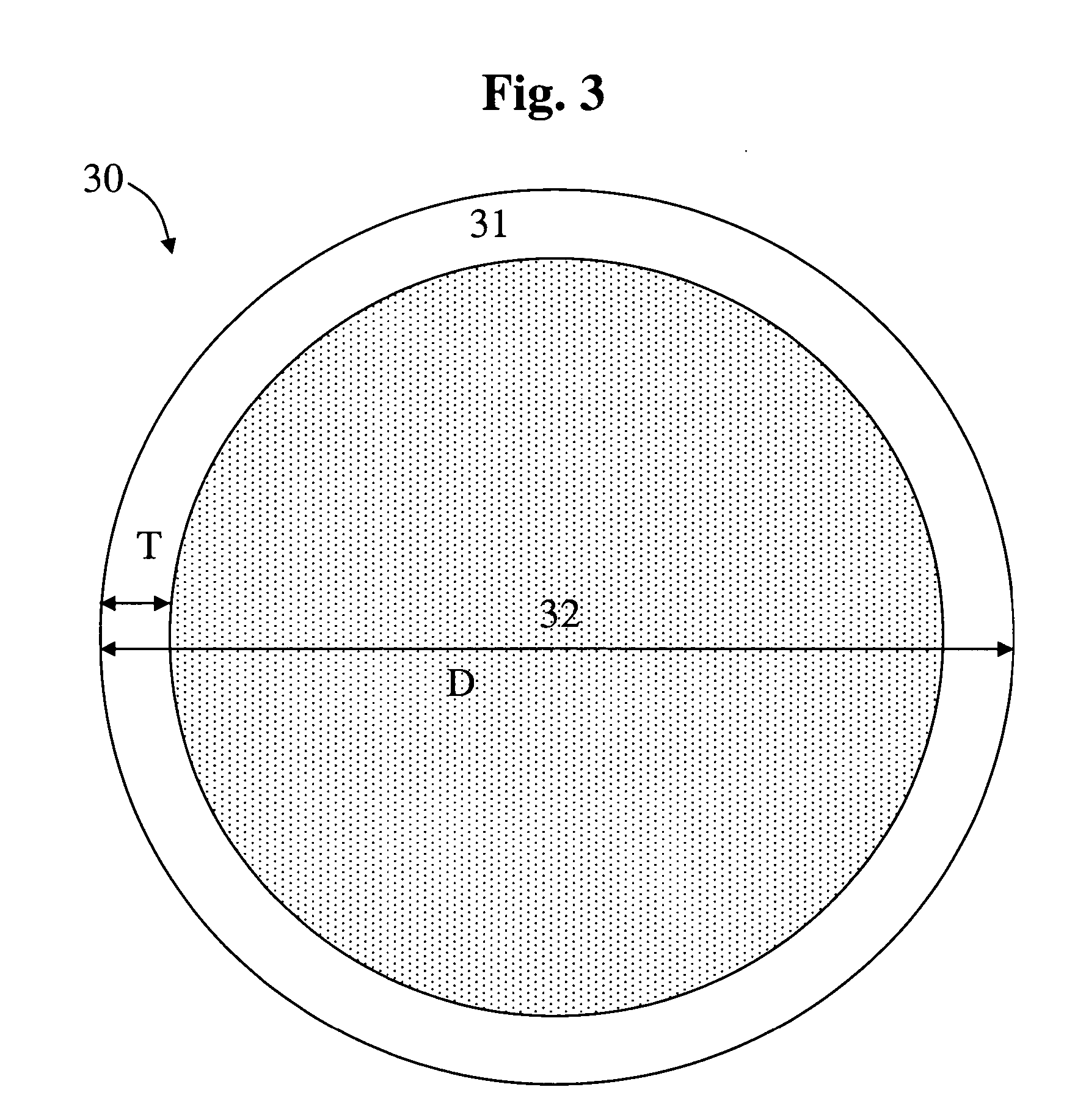Polishing pad and method of manufacture
a polishing pad and manufacturing method technology, applied in the direction of manufacturing tools, grinding devices, other chemical processes, etc., can solve the problems of polishing pads that are not made according to the method, polishing pads that lose surface asperities with use, and pores that wear away and become clogged with debris
- Summary
- Abstract
- Description
- Claims
- Application Information
AI Technical Summary
Benefits of technology
Problems solved by technology
Method used
Image
Examples
Embodiment Construction
[0018] The present invention provides a method of manufacturing a polishing pad useful for planarizing a substrate in a chemical mechanical polishing process with increased ease and efficiency.
[0019] Referring to FIG. 1, a polishing pad 10 of the present invention is shown mounted on a platen 50. The polishing pad 10 has a polishing surface 40 that is contacted with a substrate 20, such as a patterned silicon wafer. Also shown is a region of the polishing pad 12 that is shown in greater detail in FIG. 2
[0020] Referring now to FIG. 2, the method comprises preparing a polymeric matrix material 11, mixing polymeric capsules 30 into the polymeric matrix material 11 and forming a polishing pad 10. In particular, the polymeric capsules 30 have a polymeric shell 31 (FIG. 3) and a liquid core 32. The polymeric capsules 30 have increased density and increased resistance to expansion when exposed to heat during the manufacturing process. The result is a reduction in the tendency for the poly...
PUM
| Property | Measurement | Unit |
|---|---|---|
| thickness | aaaaa | aaaaa |
| thickness | aaaaa | aaaaa |
| thickness | aaaaa | aaaaa |
Abstract
Description
Claims
Application Information
 Login to View More
Login to View More - R&D
- Intellectual Property
- Life Sciences
- Materials
- Tech Scout
- Unparalleled Data Quality
- Higher Quality Content
- 60% Fewer Hallucinations
Browse by: Latest US Patents, China's latest patents, Technical Efficacy Thesaurus, Application Domain, Technology Topic, Popular Technical Reports.
© 2025 PatSnap. All rights reserved.Legal|Privacy policy|Modern Slavery Act Transparency Statement|Sitemap|About US| Contact US: help@patsnap.com



